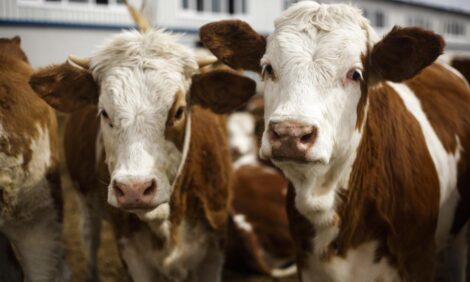



Herd and Human Health: Exploring the Link
Recently, a single case of tuberculosis was identifed through a whole-herd tuberculosis (TB) test in a nonlactating North Dakota dairy heifer.Susan Keller, D.V.M., North Dakota state veterinarian, addresses the issue in response to the recent case and will be featured at this year’s at Dairy Cow College to address concerns. (see news release at www.nd.gov/ndda/).
Mycobacterium bovis and Mycobacterium tuberculosis are slow-growing organisms that can cause the disease known as tuberculosis, writes Mrs Keller.
When an animal or a person is diagnosed as being positive for “Mycobacterium tuberculosis complex,” it can be due to either one of these organisms. Further laboratory testing is required to con?rm which organism has been isolated.
Clinical signs associated with an infection may not be evident for a long time. Tuberculosis can affect humans and cattle (as well as other species), and the disease can move from one species to another. According to Charles Thoen and James Steele, well-known authors on Mycobacterium bovis, “many regard humans as a source of infection for cattle,” and several cases of transmission of M. bovis from infected peoples to their herds have been documented.
Without acknowledging the complexity of the zoonotic nature of the disease, an ongoing cycle of reinfection is possible, resulting in an increase of disease in animal and human populations as well. The movement of animals and people continues to increase. The goal should be the implementation of management practices to decrease the risk of disease introduction.
Most people haven’t forgotten the accomplishments of Dr. Louis Pasteur. We need to be reminded from time to time about “pasteurization,” the process named after this individual. The practice was implemented nationally early in the 1900s in an effort to prevent unnecessary disease spread through the consumption of raw dairy products capable of being a source of bacteria, such as Mycobacterium bovis (M. bovis) and Mycobacterium tuberculosis (M. tb), which can cause tuberculosis in animals and humans.
Other pathogens such as Brucella abortus, Escherichia coli and Salmonella also are destroyed due to the practice of pasteurization. In recent years, it has been frustrating to hear about new cases of tuberculosis identi?ed in livestock operations in states that have been deemed to be free of TB for decades.
With the advent of the ability to whole genome sequence mycobacterium that are identi?ed in animals and humans, we have the potential to better understand the movement of the disease. This means we have the ability to use DNA technology to learn where TB may have come from, and when we have multiple cases, we may be able to tell who transmitted the disease to whom.
As Pasteur wisely stated, “Science knows no country because it is the light that illuminates the world.”
That principle is still true today. Science will help illuminate this issue and be able to help provide guidance to producers for best management and risk mitigation practices.
Thanks to the remarkable process of pasteurization, the general public can be reassured that pasteurized milk is safe to drink. The challenge is to treat or eliminate the disease to assure that livestock and livestock caretakers remain safe from potential exposure to these zoonotic pathogens as well. Even though these technologies offer a lot of potential bene?ts, adoption rates – while increasing – still tend to be slow.


